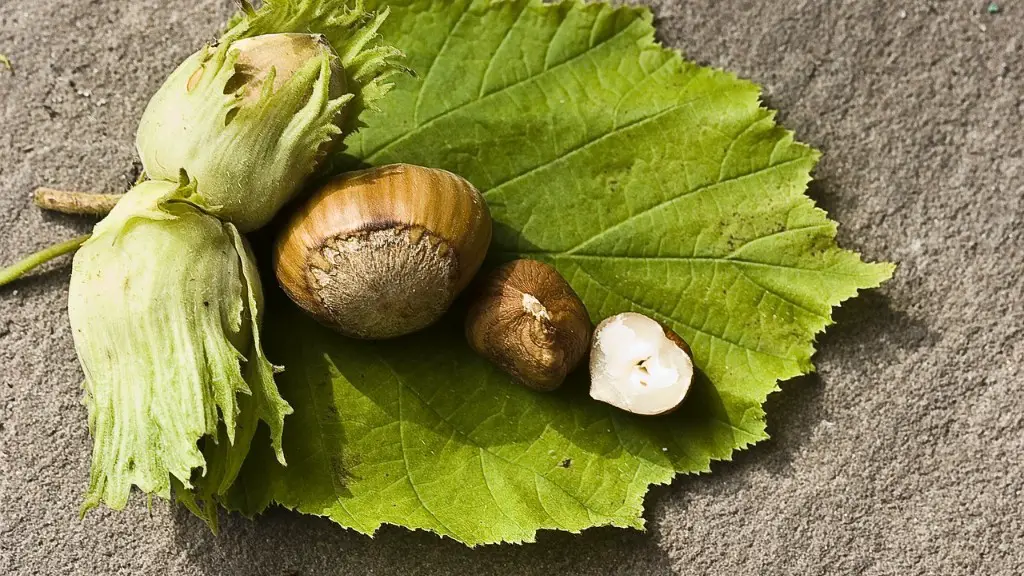Growing a lemon tree from lemon seeds requires patience and dedication. One must also possess some flower-growing knowledge. To begin, start by taking two or three ripe organic lemons and cut them in half. Slice the seed from the center and place it in warm water that has had a few drops of antibacterial soap added. Keep the seed submerged in the water for at least 15 minutes, then rinse it with cold water. This will help to disinfect the seed and remove the casing.
Next, spread the seeds out on a paper towel and pat them dry. Place the half-inch deep teaspoon-sized pot filled with moist soil and press the lemon seeds one-inch deep. Be sure to keep the soil in a warm location and keep it moist by misting it with water every other day. Once seedlings appear in around 10 to 14 days, thin out the seedlings so that only one or two remain per pot. Water regularly and provide plenty of sunlight.
From here, it’s important to transplant the seedlings into an individual pot containing well-draining soil with generous amounts of compost, manure and sand. Lemon trees love sunshine, so place the pot in a warm, sunny spot and water regularly. To encourage further growth, apply fertilizer every two weeks, taking care not to over-fertilize. As the tree matures, ensure that it does not suffer from drought and overwatering.
When transplanting the seedlings, it is wise to prune them and remove any dead, weak or damaged branches. Doing so will help to promote growth and ensure the tree gets enough sunlight, air and fertilizers. Also, make sure that the roots of the tree have enough space to grow and breathe. Mulching the lemon tree will help to keep the soil moist and aid in retaining water and protecting the tree from drought, too.
As the tree begins to bear fruit, wait until the fruits are mature before harvesting them. Be sure to collect any fallen fruit as these could potentially damage the tree. After the harvest, give the tree enough time to rest and recover before pruning it again. This will ensure the tree is strong, healthy and able to bear abundant fruit year-round.
Vital Checks for the Lemon Tree
Regularly inspecting the lemon tree is essential for the tree’s overall health and development. It is important to watch for signs of insect infestations and damage, as certain pests can quickly spread and weaken the tree. When examining the tree, check for signs of wilted or discolored leaves and inspect the trunk for any wounds or lesions. Additionally, watch out for any fungal growth or dead leaves that could be indicative of a underlying disease.
It is crucial to prune any dead, weak or overcrowded branches often to ensure that the tree can receive enough sunlight and air. Doing so will also help to encourage a healthier-looking canopy. Moreover, any dried or damaged fruits need to be removed to keep the tree well-nourished. Finally, inspect the tree’s soil regularly to check the water and nitrogen levels, and amend the soil as needed.
Pest and Disease Management
Lemon trees can be prone to certain pests and diseases, thus making pest and disease management one of the most important aspects of lemon tree care. The most common pests include mites, mealybugs, and aphids, which feed off of the tree’s leaves and fruits. The most common diseases include leaf spot, wilt and canker, all of which can weaken the tree and reduce its yield. If any of these pests or diseases are spotted, it is important to take immediate action.
Start by cleaning and pruning the tree to remove any pests or diseased parts. Then, create a homemade pesticide with two parts water and one part rubbing alcohol and spray the tree’s leaves with it every few weeks. If the problem persists, it may be necessary to purchase a commercial pesticide to eradicate the pests or disease for good. For further advice, consult with a certified arborist or your local plant nursery.
Fertilizers for Continual Growth
Applying a balanced fertilizer to the lemon tree is essential for its continual growth and development. Before purchasing a fertilizer, research what nutrients the tree needs and purchase one that contains those nutrients. It is important to note that over-fertilization can damage the tree, so it is best to start with a small amount and adjust depending on the tree’s needs. Additionally, tree fertilizers can be purchased as liquid or granular, both of which come in slow-release and organic varieties.
When applying the fertilizer, be sure to wear gloves if necessary, and spread the fertilizer around the base of the tree. If a granular fertilizer is used, mix it with the soil at a ratio of one cup per nine square feet. Afterward, gently water the soil to help the fertilizer seep into the soil. Depending on the type of fertilizer used, it is generally good practice to reapply the fertilizer once every 1 to 2 months.
Potential Issues with Growing a Lemon Tree from Seeds
Unfortunately, there are many issues and factors to consider before growing a lemon tree from seeds. One of the most common issues is that lemon trees grown from seeds often take at least 5 to 7 years to start yielding lemons. Additionally, the climate and location in which the tree is grown may drastically affect the tree’s success and growth. If the climate is too cold, the tree may not bear any fruit and may even die, so it is important to research the area and determine if it is suitable for lemon tree growth.
Furthermore, lemon trees grown from seeds may not possess the same characteristics as other lemon trees, as they may be a hybrid of the parent tree. As such, it may not produce the same flavor or amount of fruit as other lemon trees. Last, lemon trees grown from seed take a lot of time and care, so it is important to be patient and consistent with the tree’s care, as this will increase the tree’s life span.
Healthy Harvest for the Lemon Tree
Once the lemon tree bears fruit, it is important to collect the lemons from the tree as soon as they ripen. Doing so will not only keep the tree healthy, but also ensure that the lemons remain fresh and flavorful. At the same time, try to reduce the amount of stress on the tree, as this can easily impact the quality of the fruit yield. As such, pick no more than one third of the tree’s lemons and spread the harvest out over a few weeks.
To properly check if the lemons are ripe, check the color and texture of the rind. If they appear yellow and have a slightly fragrant aroma, they are ready to be harvested. To pick the lemons, use pruning shears or clippers, and be sure to disinfect them between uses. After harvesting, immediately store the lemons in the refrigerator or a cool, dry area, and they should keep for 7 to 10 days.


